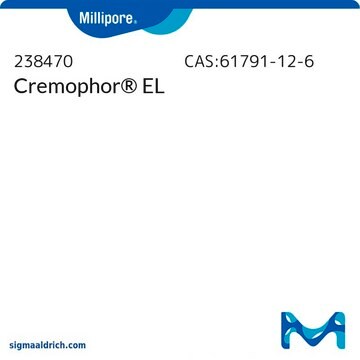ABN1647
Anti-VGluT1
from rabbit
Synonym(s):
Vesicular glutamate transporter 1, Brain-specific Na(+)-dependent inorganic phosphate cotransporter, Solute carrier family 17 member 7
About This Item
Recommended Products
biological source
rabbit
Quality Level
antibody form
unpurified
antibody product type
primary antibodies
clone
polyclonal
species reactivity
mouse, human, rat
species reactivity (predicted by homology)
bovine (based on 100% sequence homology)
packaging
antibody small pack of 25 μL
technique(s)
immunoautoradiography: suitable
immunofluorescence: suitable
immunohistochemistry: suitable
western blot: suitable
isotype
IgG
NCBI accession no.
UniProt accession no.
shipped in
ambient
target post-translational modification
unmodified
Gene Information
human ... SLC17A7(57030)
General description
Specificity
Immunogen
Application
Immunohistochemistry Analysis: A representative lot detected VGLUT1 in prefrontal cortex of a representative control subject and AD patient (Kashani, A., et. al. (2008). Neurobiol Aging. 29(11):1619-30).
Western Blotting Analysis: A representative lot detected VGLUT1 in glutamate transporter 1 in rat and human putamen extracts (Kashani, A., et. al. (2007). Neurobiol Agining 28(4):568-78) and prefrontal cortex of controls, MCI, early stage Alzheimer (Kashani, A., et. al. (2008). Neurobiol Aging. 29(11):1619-30).
Immunofluorescence Analysis: A representative lot detected VGLUT1 in mouse striatum and hippocampus tissue (Courtesy of Dr.Salah el mestikawy PhD, at DR1 CNRS (CENTRE NATIONAL DE LA RECHERCHE SCIENTIFIQU - SATT LUTECH).
Immunofluorescence Analysis: A representative lot detected VGLUT1 in rat striatum (Herzog, E., et. al. (2001). J Neurosci. 21(22):RC181).
Immunoautoradiography Analysis: A representative lot detected VGLUT1 in coronal sections of frontal rat brain (Herzog, E., et. al. (2004). Neuroscience. 123(4):983-1002) and rat brain sagittal sections (Herzog, E., et. al. (2001). J Neurosci. 21(22):RC181).
Western Blotting Analysis: A representative lot detected VGLUT1 in BON cells stably expressing VGLUT1 (Herzog, E., et. al. (2001). J Neurosci. 21(22):RC181).
Neuroscience
Quality
Western Blotting Analysis: A 1:1,000 dilution of this antibody detected VGLUT1 in 20 µg of mouse brain tissue lysate.
Target description
Physical form
Storage and Stability
Disclaimer
Not finding the right product?
Try our Product Selector Tool.
Storage Class
12 - Non Combustible Liquids
wgk_germany
WGK 1
flash_point_f
Not applicable
flash_point_c
Not applicable
Certificates of Analysis (COA)
Search for Certificates of Analysis (COA) by entering the products Lot/Batch Number. Lot and Batch Numbers can be found on a product’s label following the words ‘Lot’ or ‘Batch’.
Already Own This Product?
Find documentation for the products that you have recently purchased in the Document Library.
Customers Also Viewed
Our team of scientists has experience in all areas of research including Life Science, Material Science, Chemical Synthesis, Chromatography, Analytical and many others.
Contact Technical Service











